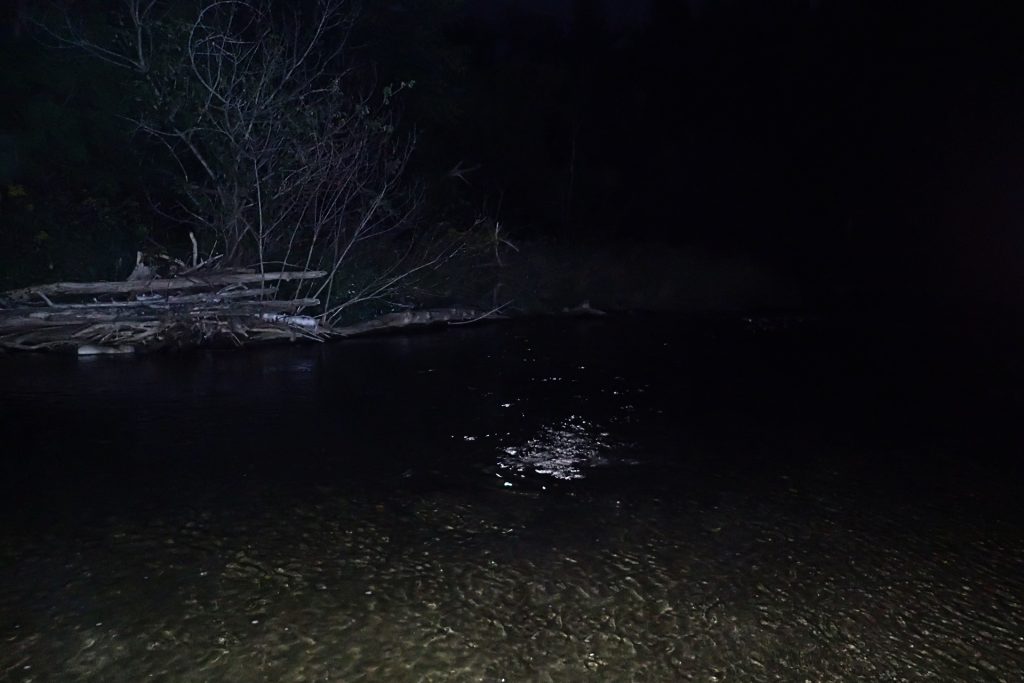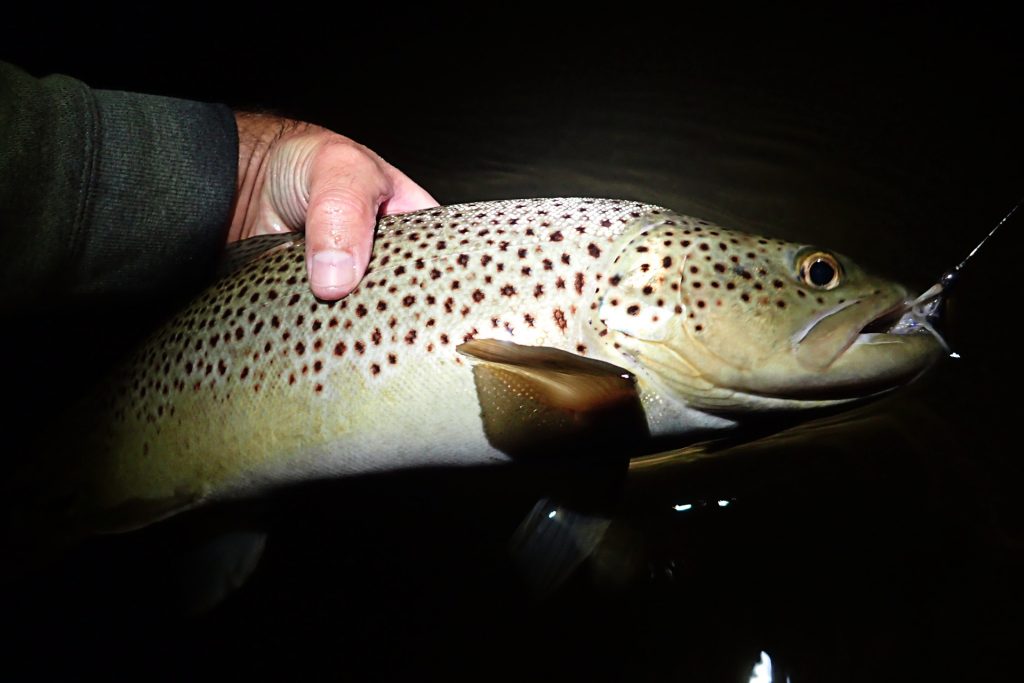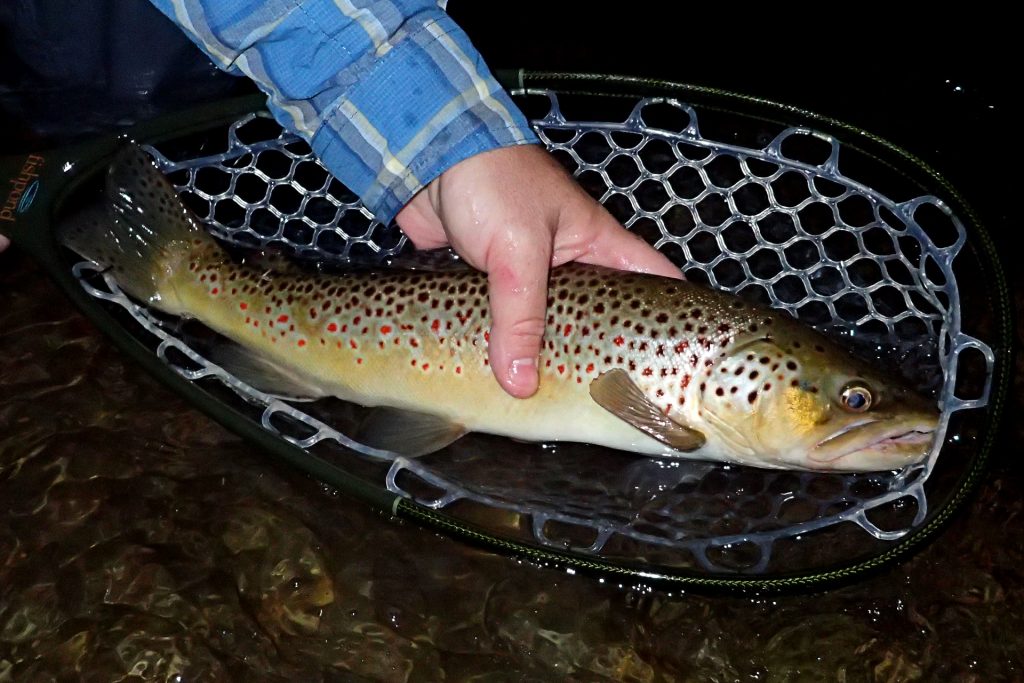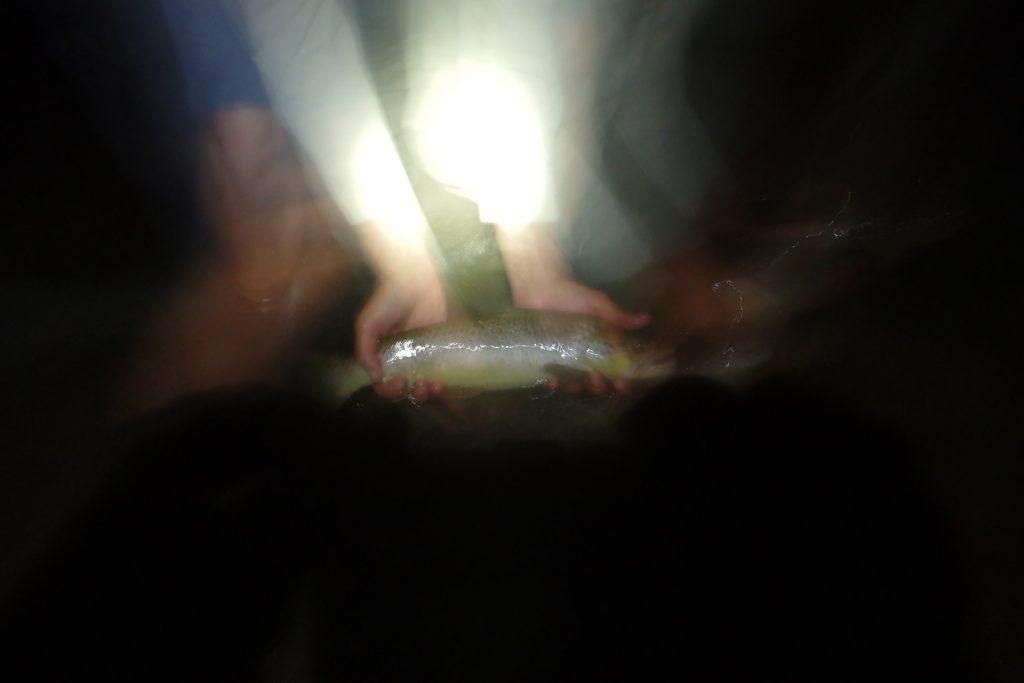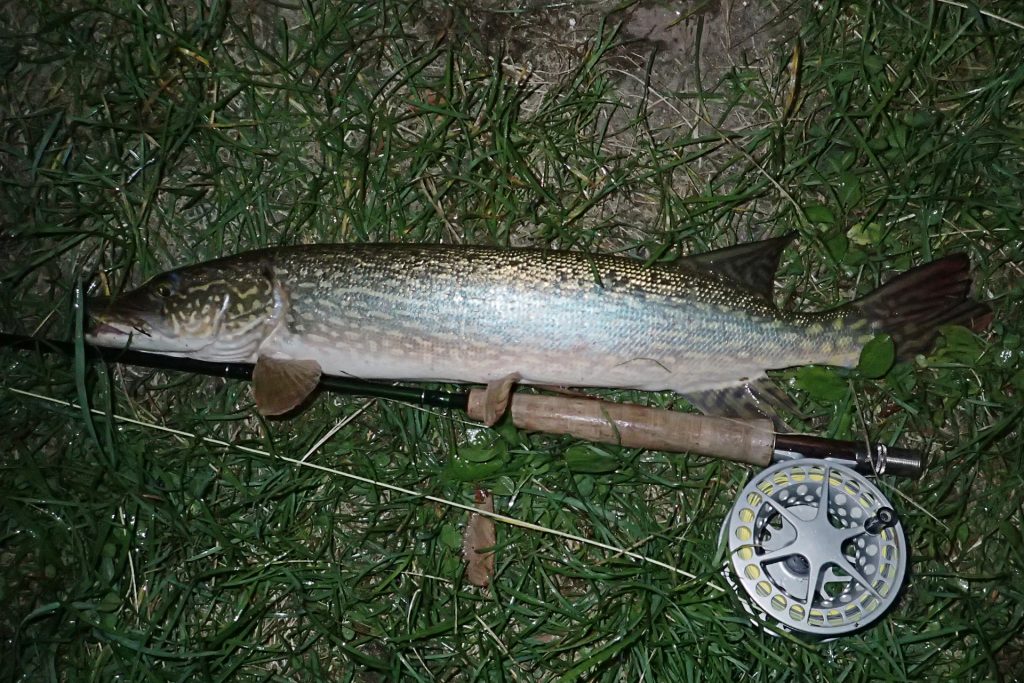There’s never a dull season fly fishing in Southern Ontario, for better or for worse. This year began with moderate temperatures, average water levels and lots of bug activity – just about perfect conditions for fly fishing. I was casting to big Brown Trout rising to large bugs on the surface and our local streams were teeming with native Brook Trout. Unfortunately, a severe lack of rain (the worst I can recall in recent history) and high temperatures led to low water levels and few insects for the second half of the season. My beloved Brookie streams were reduced to mere trickles, where the only signs of life were leftovers from the tens of thousands of hatchery raised Atlantic Salmon juveniles that had since taken over. Even Smallmouth Bass were struggling on many rivers.
Still, on the upper Credit River, solid numbers of both large and small trout were being caught throughout the season. Cool evenings and the many cold springs that feed the Credit kept temperatures safe for much of the season. Of course, in extremely low, clear water with little bug activity, fishing becomes difficult during daylight hours. More often than not, the fish are completely inactive – hiding in undercut banks, vegetation and under logs, waiting for the cover of dark. This is especially true for Brown Trout and it happens to be ideal conditions for night fishing.
For the most part, my night fishing has become less intentional than in years past. Aside from a few planned late-night outings with friends, most of my night fishing has simply been the result of fishing a couple hours before dark, then refusing to leave after that magic half-hour window when the action just starts to pick up. Some years are better than others and I can recall a couple seasons ago spending a significant amount of time fishing past dark with little to no results. This has been no such year.
The above fish was a fitting close to the 2016 trout season, caught shortly past dark in a pool that an hour earlier failed to show any sign of life. I’d spent at least 30 minutes fishing the pool before dark, with a variety of flies at different depths, using both floating and sinking lines. On the way back to my truck, I stopped at the pool again and hooked into this brute almost immediately. This was probably my largest fish of the season – too large to fit in my net. I estimated it to be about 24 inches.
I’ve probably caught more large Browns this season than I have in the previous few years combined, despite spending less time fishing at night. I attribute this to the increased confidence of knowing where big trout live, a better understanding of how they behave, and as usual, an ounce of luck. After a small bout of success when I first began night fishing a few years ago, I naively made the assumption that simply showing up past dark with big flies would put me into big fish. I won’t lie, it definitely helps stack the odds in your favor, but there are lots of other things that have to go right for you to hook into a big wily Brown Trout at night.
This became all too clear to me this season, after taking some friends out past dark a handful of times in an attempt to get them into some big fish. At first, I’d take them to my favorite holes and give them absolute guarantees that they would hook into some 20+ inch fish. When we left empty-handed, I’d blame it on timing or simple bad luck. However, when our next few outings produced the same results (yet I consistently caught fish by myself in-between our trips), I began questioning the real reasons for our lack of success.
I suppose it’s possible that they just didn’t have the skills required to catch those fish. But I was there telling them what to use, when and where to cast and how to retrieve. So if that were the case, I guess that’d make me a pretty bad guide. I do believe that they contributed to the difficulty, but not due to any lack of skill. When we fished together, I also did significantly worse, usually leaving with at most a single fish.
Something that too many anglers take for granted is the need for extreme stealth when in the presence of big trout. When Ryan and I were out fishing past dark, we may not have realized it, but together we were making our presence all too known to those smart old browns. They may become voracious feeding machines at night, but they still have all the built-in defense mechanisms that granted them the long life they now have. Two silhouettes instead of one, the increased noise from our chitter-chatter, a few extra false casts and splashes on the water and extra light from two peoples’ headlamps while tying on new flies or navigating in the dark… these all create significant disadvantages.
To increase my chances of success, I make sure to arrive quietly and take some time to let the pool settle before attempting to fish (in case my arrival alerted any fish). My first casts, especially when the sun hasn’t completely set or when the moon is bright, are from behind cover or at the very least on my knees. I prefer a few extra false casts over letting the fly hit the water and then lifting it up to cast again due to a short cast. In fact, one of the worst mistakes I see is making a cast that is too short, then picking it back up immediately to fix the cast. You’re far better simply fishing out the short cast than trying to fix it after it lands. Also, keeping the lights off for as long as possible and ensuring they are pointed away from the water for the few times you may need to change a fly is paramount. The last point also helps your eyes to adjust to the darkness, greatly increasing your ability to cast accurately.
Put all these things together, along with a good selection of flies that will bring out the worst in big trout and you have a recipe for getting into some truly huge fish. Below are a few more of the fish that I got into after dark this season:
I’ve mentioned it before, but photographing fish in the dark is also a challenge. Having a friend makes this easier, but even then, the camera and lighting need to be setup properly and ready to go when you need them. It’s very difficult to fuss around with this stuff in the dark, not to mention after landing a fish. The absolute worst thing you can do is spend time messing around with cameras at the expense of a quick release. Below is just one of many examples I have of what happens when your setup isn’t perfect.
Most of my night shots are still quite poor, but I’m slowly figuring things out. When I plan to take photos fishing alone, I now have a mini-tripod setup next to me ready to go with a custom timer of about 5 seconds. To snap a photo, all I need to do is turn it on and press a button, without having to take the fish out of the water. Even then though, forgetting to turn off the flash or a headlamp often results in disaster.
I suppose I should mention one last fish that I caught at night this season. This one was actually caught on the same night as my previous post (Pike Pool). As mentioned there, I’d been hunting a Pike that broke me off three times the day prior. I eventually caught the fish before moving to a different pool to cast for browns after dark. In between two big browns from the slideshow above, I was broke off yet again by what seemed to be another Pike. I put my wire leader on, cast to the same spot and pulled my second Pike of the evening out of the Credit.

